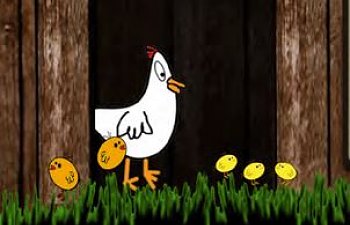Quick Guide to Brooder and Coop Bedding Materials
PDF Version:
BYC_ Brooder and Coop Bedding Options-Illustrated 676k .pdf file
There are so many bedding material options for brooders and coops out there that choosing one can quickly become an overwhelming task for new flock owners. Ask 10 'seasoned' flock owners what the best choice is, and you're likely to get 10 different answers! But it really doesn't have to be a difficult decision at all. Here are a few of the more commonly used and easily obtained bedding materials, with some basic information about each one:
Pine Shavings-
Pine shavings are inexpensive and readily available at most big box and pet stores, such as Walmart, Petco, and PetSmart. Farm and ranch stores, such as Tractor Supply also carry it, as do most general feed stores.
Pine shavings that are untreated can safely be used in brooders and coops and will not harm chickens. Chicks may try to eat the shavings, but this is uncommon and generally stops once they learn what their food is. With day old chicks, a layering of paper towels over the shavings is recommended for the first few days in the brooder.
Cleaning the brooder is relatively simple, but with cages or wire-sided brooders, you'll have pine shavings to clean up OUTSIDE the brooder as well. It's a good idea to wrap cages with a strip of cardboard a few inches tall to help contain the shavings.
Used pine shaving bedding can be added to a compost pile, or tilled directly into soil.
CAUTION: Do not use Cedar shavings in brooders or coops. The strong aromatic oils in Cedar can cause respiratory problems in chickens and other small animals.
Sand-
Many people use sand in brooders and coops for it's low cost, superior drainage, and ease of cleaning. Play sand is available at big box & home improvement stores, such as Walmart, Home Depot, and Lowes. It can also be purchased by the 'load' in many areas from local sources. It's a good option especially for coops with bare earth floors, but can be used in completely enclosed coops also.
For smaller coops that get daily cleanings, sand provides a 'scoopable' bedding, much like kitty litter. It can, however, become compacted when it stays wet and is therefore not recommended in environments with high humidity or for those that are routinely exposed to moisture.
Chicks may attempt to eat sand, but this can be avoided with a layer of paper towels over the sand for the first few days in the brooder. Sand with no covering can become quite hot, so be sure to locate your heat source far enough away from it to keep the sand from being too hot for chicks to walk on.
Used bedding sand can't be composted, but it can be added to soil to help improve drainage.
Straw and Hay-
Often used on farms and ranches that also house large animals, straw and hay are frequently recommended as brooder and coop bedding materials. Both provide good drainage, but less than optimal absorption. It is easy to clean and often used in deep layering. Both straw and hay are low cost bedding options, with straw being significantly cheaper than hay.
Used straw and hay bedding can be raked out of the coop and thrown directly into a compost pile.
CAUTION: Straw and Hay can mold quickly when exposed to moisture. Mold can cause serious respiratory problems in animals and humans. If you suspect your bedding has mold, remove and destroy it, disinfect and dry the area thoroughly and replace with fresh bedding.
Puppy Training Pads, Newspaper & Paper Towels-
For day old chicks, the simplest brooder bedding for the first week or two is newspapers or puppy training pads covered with paper towels. Cleaning is quick and easy by simply removing soiled paper towels and replacing with clean paper towels. If done regularly, the underlying newspaper or training pad should last several days before needing to be replaced. Similarly, a folded bath towel can be used under paper towels.
CAUTION: Newspaper should not be used alone. It's surface is too slippery for chicks to easily walk or stand on and can cause chicks to develop splayed legs.
Soiled newspaper and paper towels can be added to compost piles.
Bedding "Helpers":
Diatomaceous Earth (DE)
Food Grade DE can be mixed in to any type of bedding to help dessicate or 'dry up' droppings. Less moisture means less odor, fewer flies, and easier cleaning. Food Grade DE is safe for chickens of all ages, other animals, and humans. It is a powder, so take care that you or your animals do not inhale it during application.
Food Grade DE is sold in farm & ranch supply stores, feed stores, and online. Pool supply companies also sell a form of DE, but it is not food grade and should not be used in animal bedding.
When mixed with sand, DE improves the 'scoop-ability' and lessens the problem of compaction in humid areas and makes a great dust bath for chickens.
Many people use and recommend products such as Stall Dry, Sweet PDZ, and Dry Stall as bedding additives to help control odors. They work as ammonia neutralizers and are typically made up (either singly or in a combination) of natural ingredients like DE, clay, volcanic aggregate, or calcium bentonite. While food grade DE is safe for human and animal consumption, if you use a branded product, check the label and ingredients before allowing your animals to ingest it.

